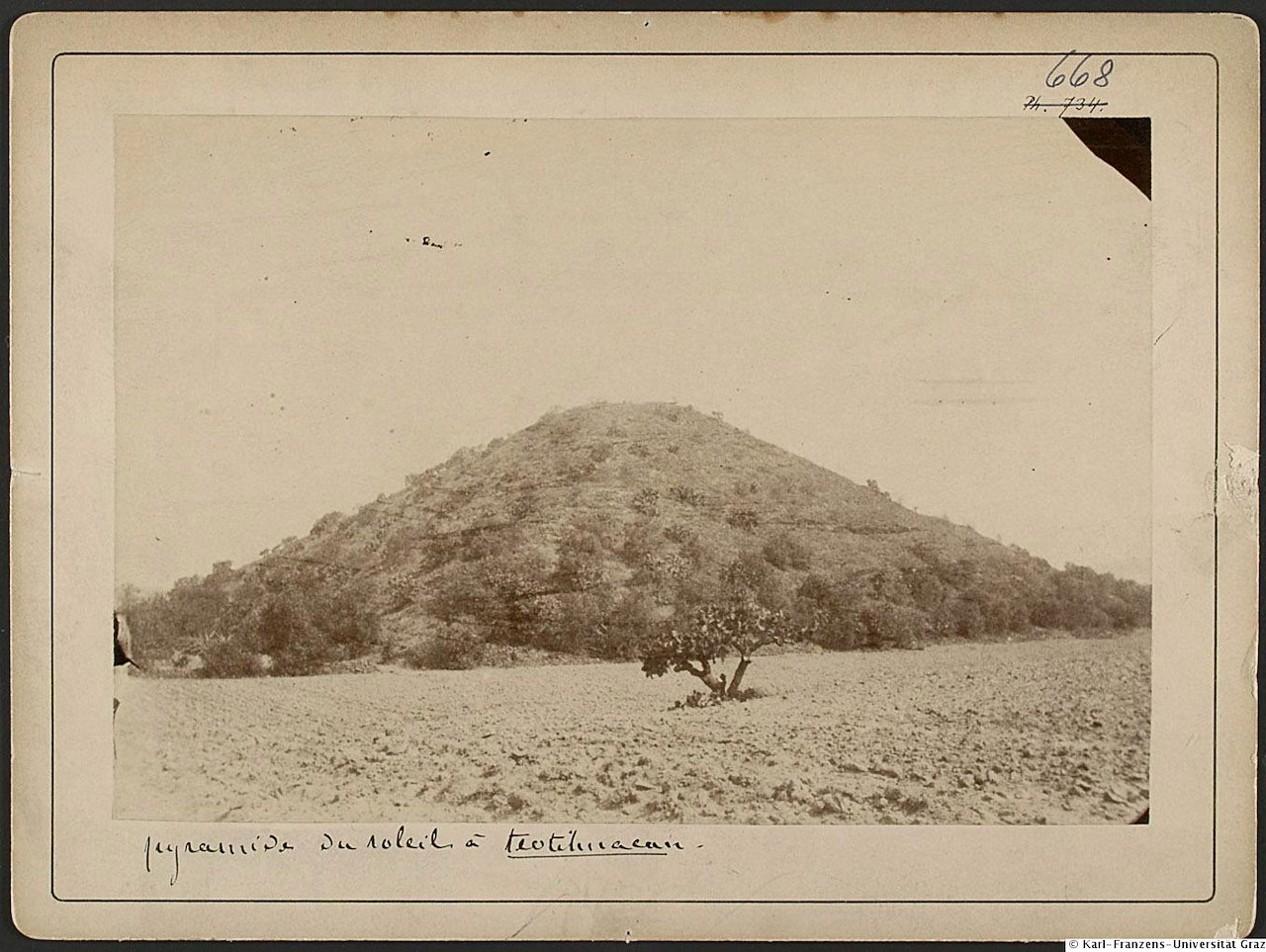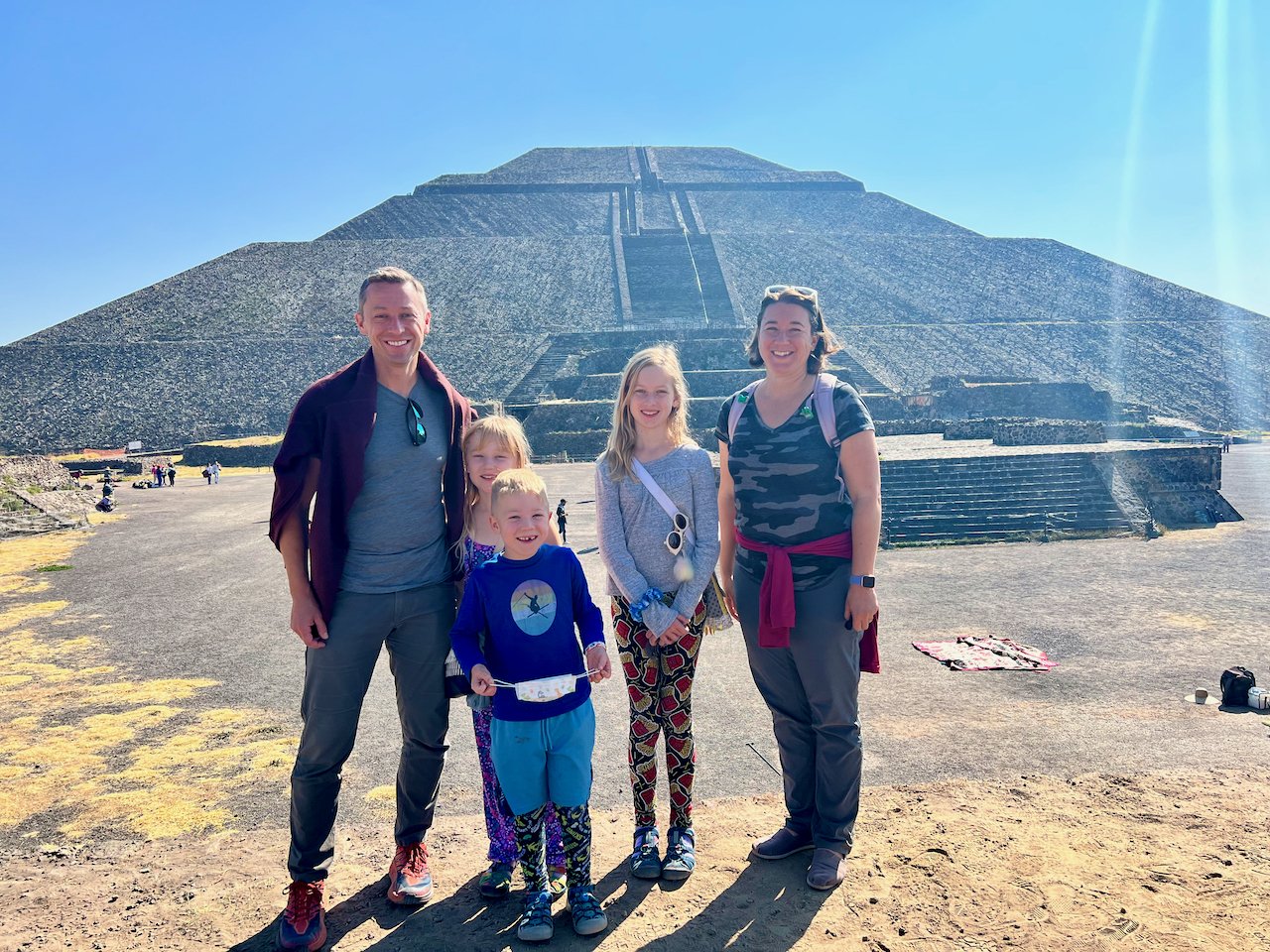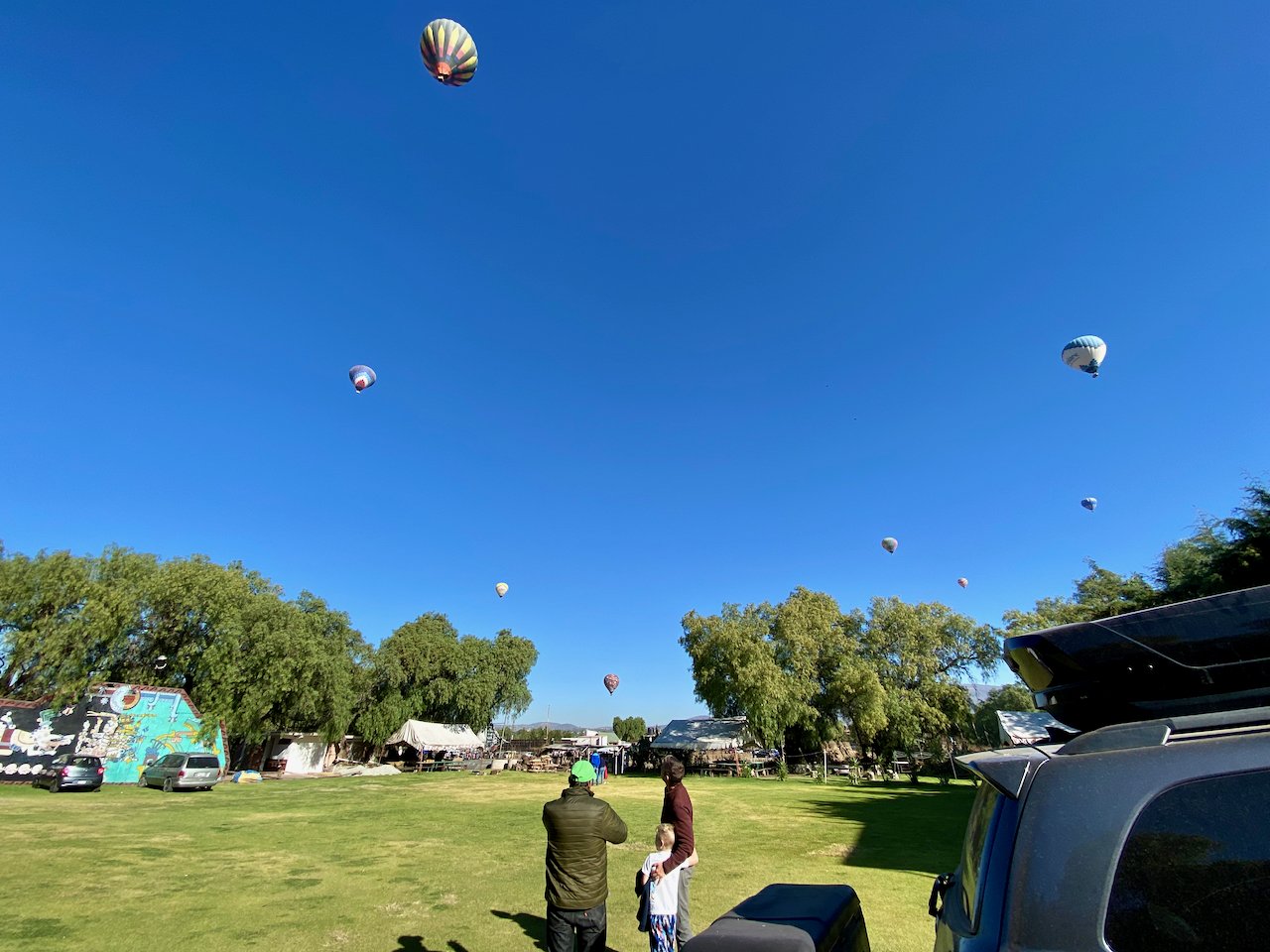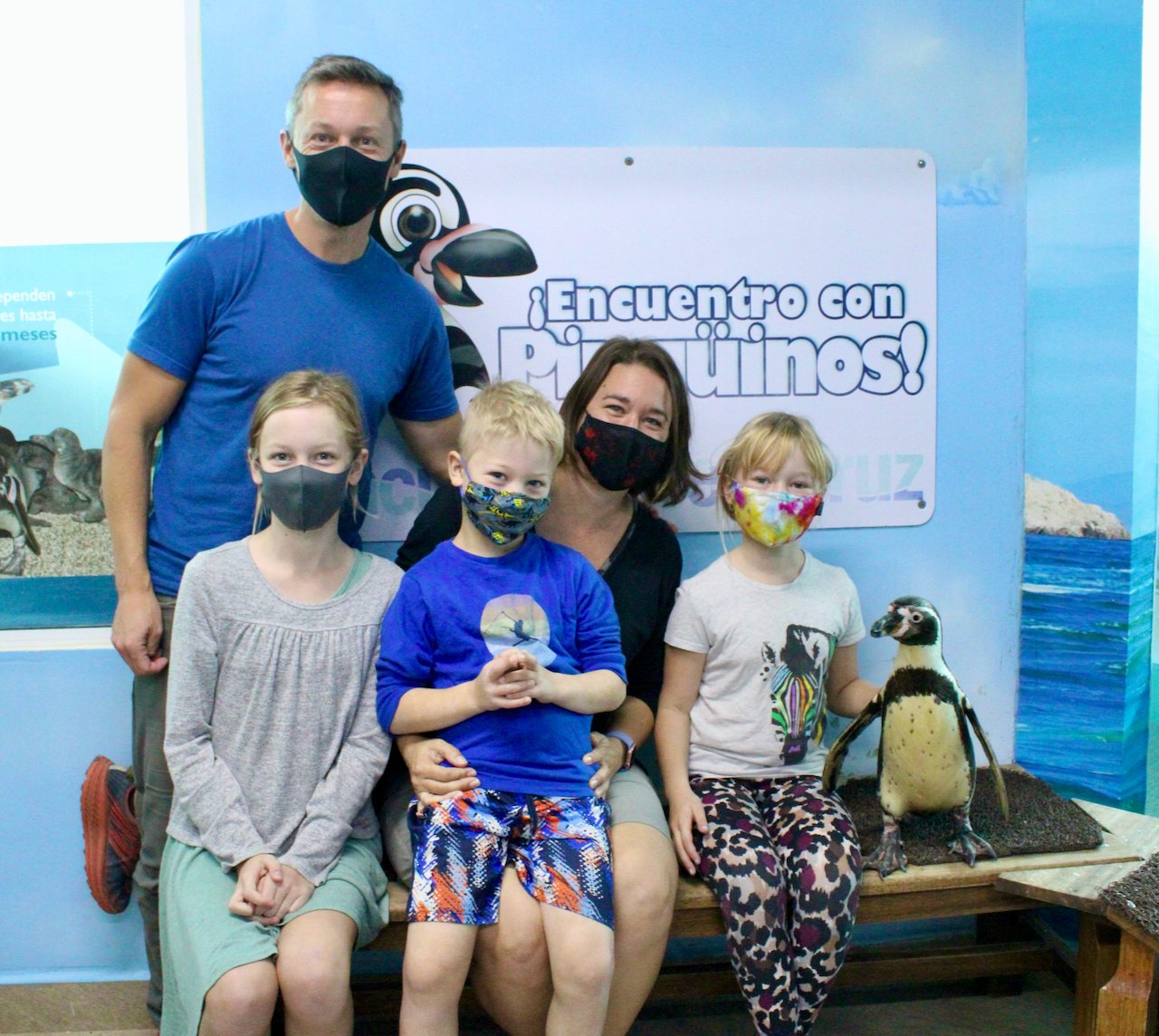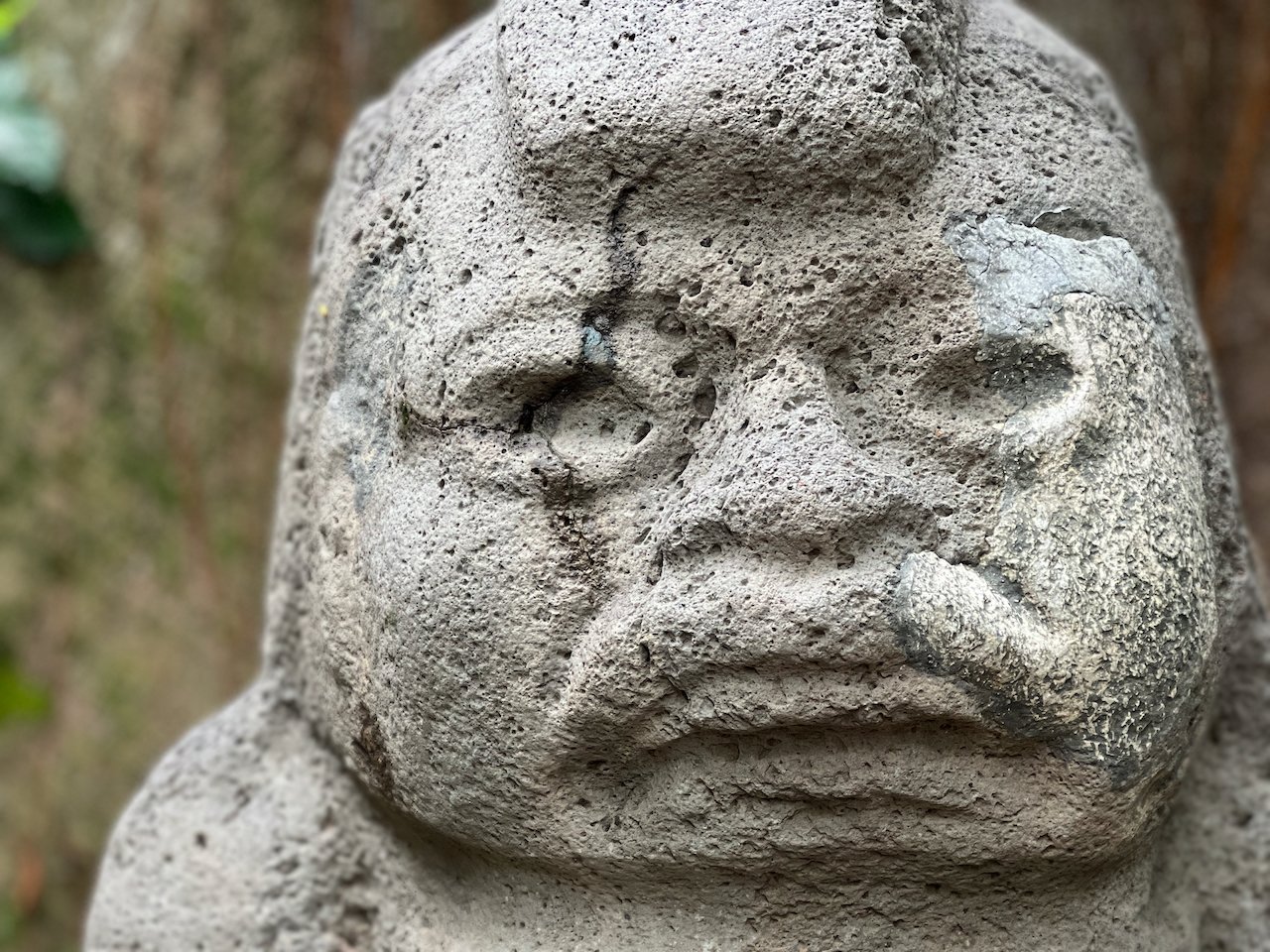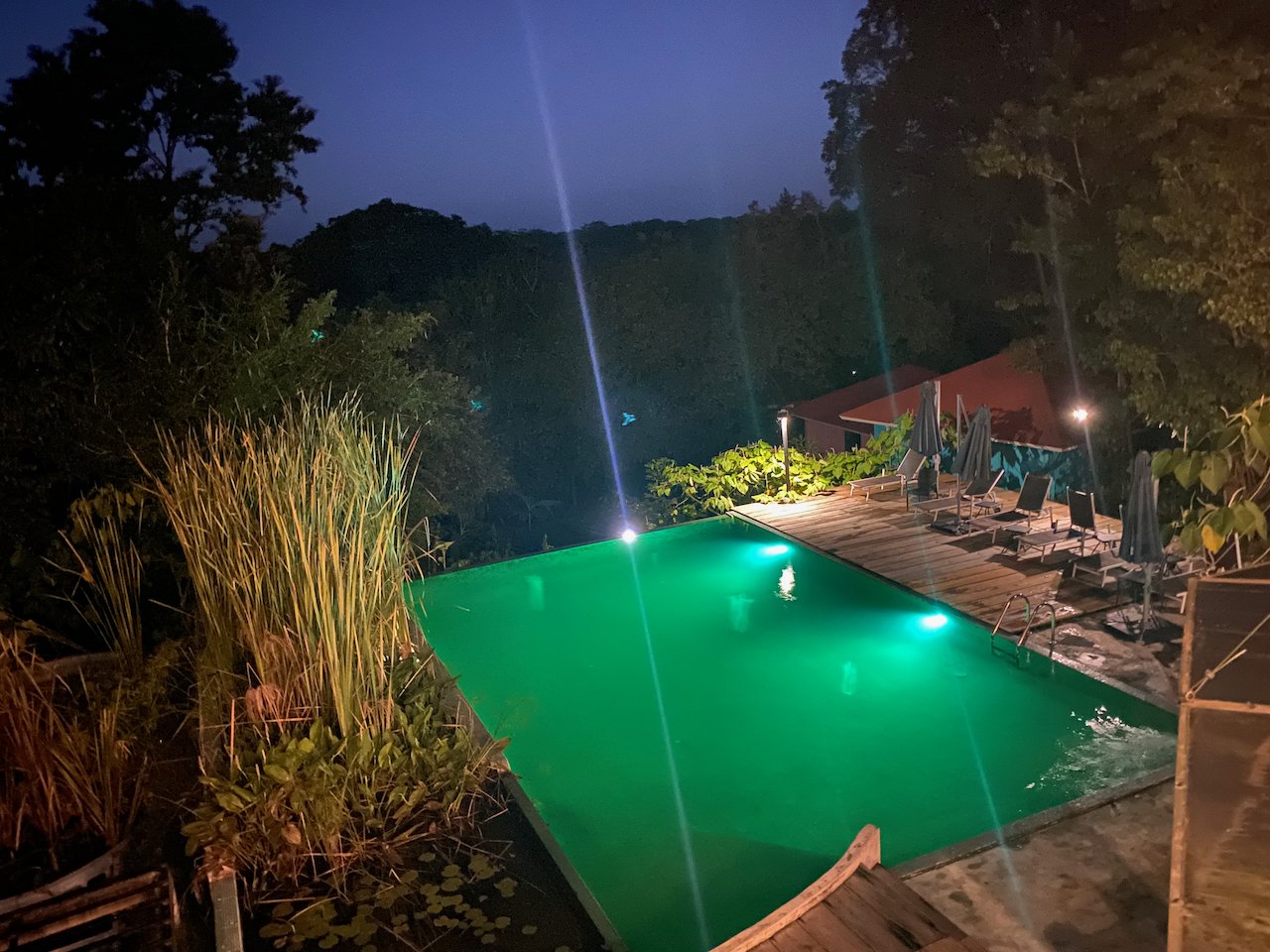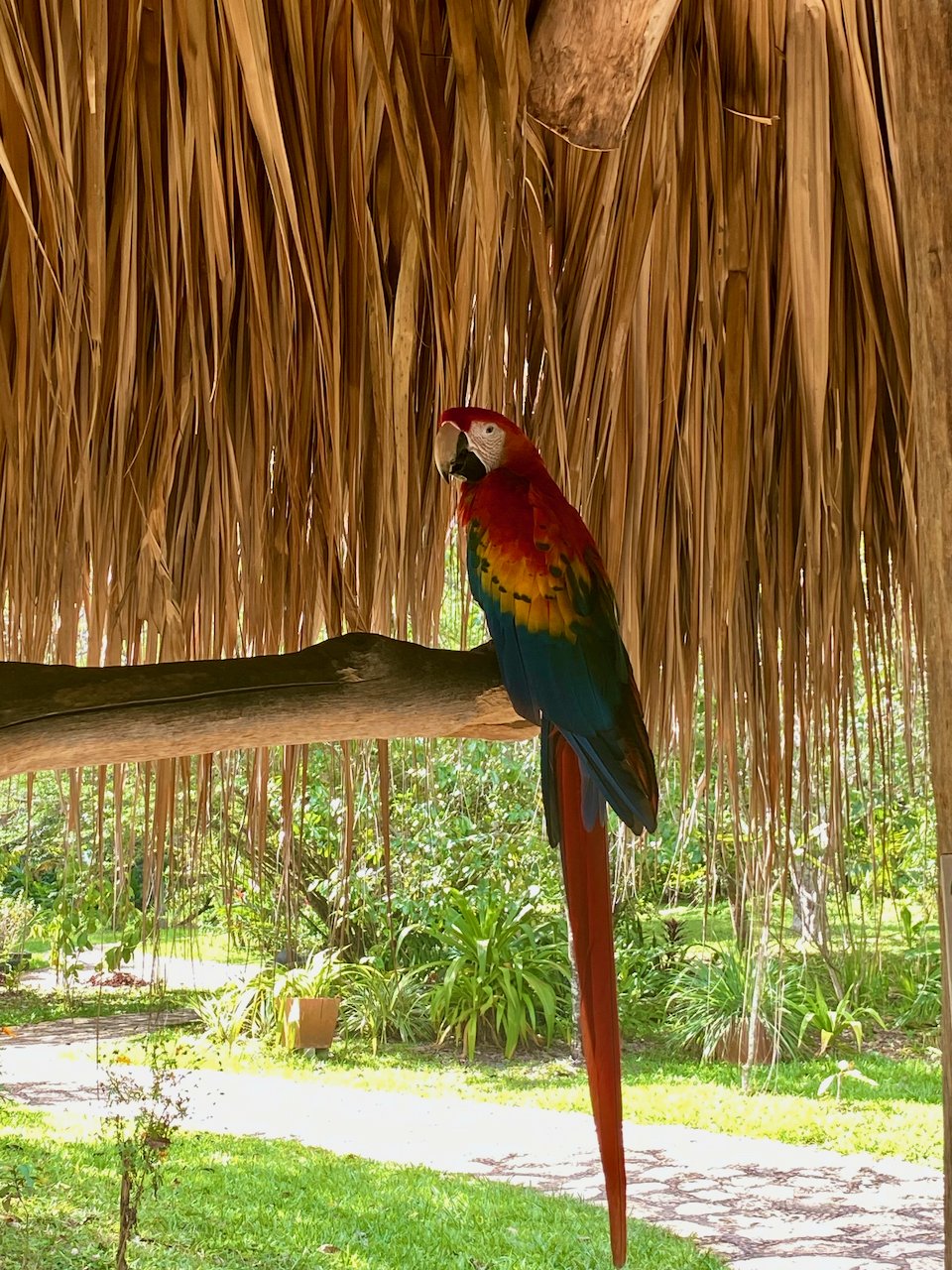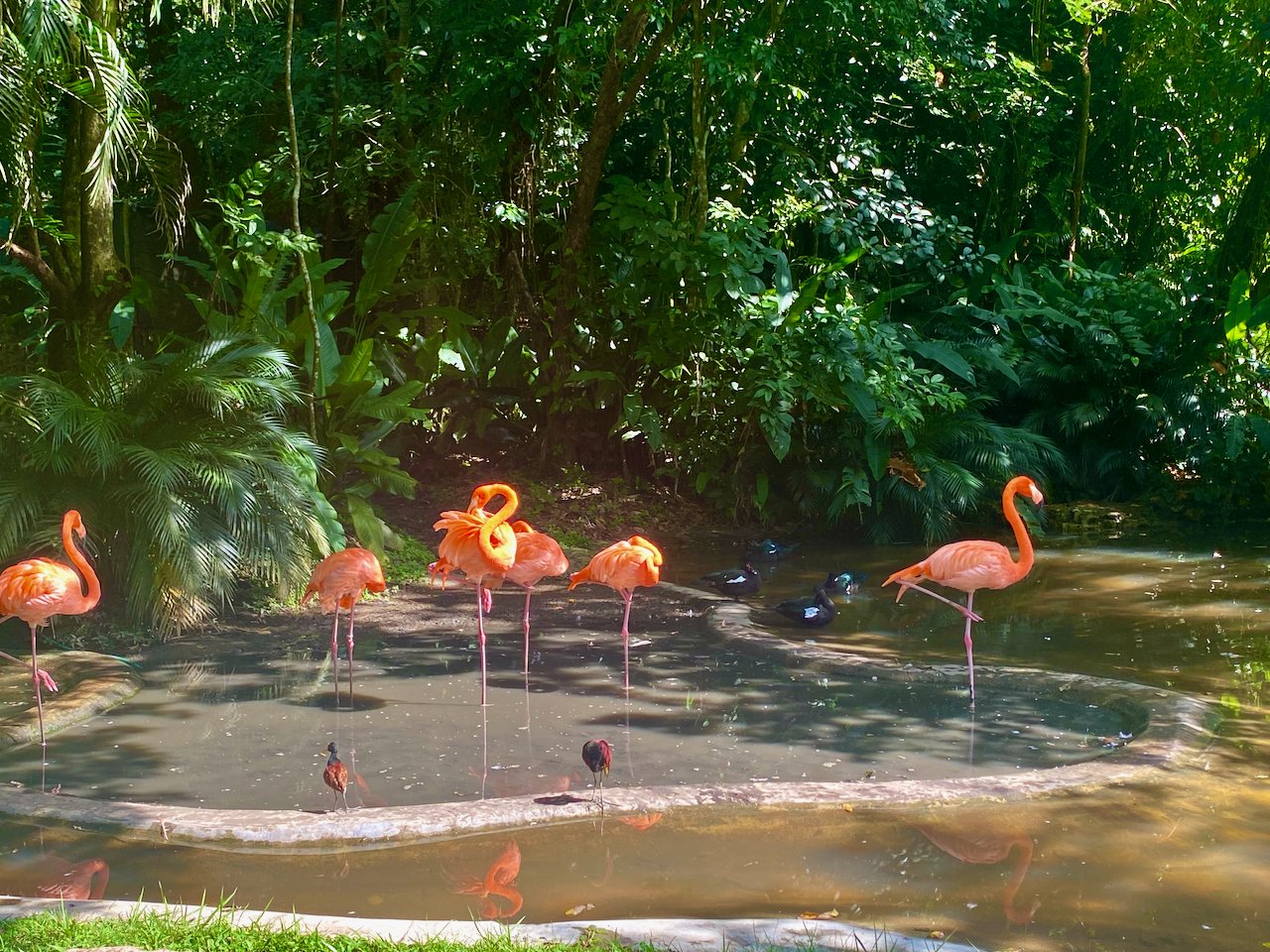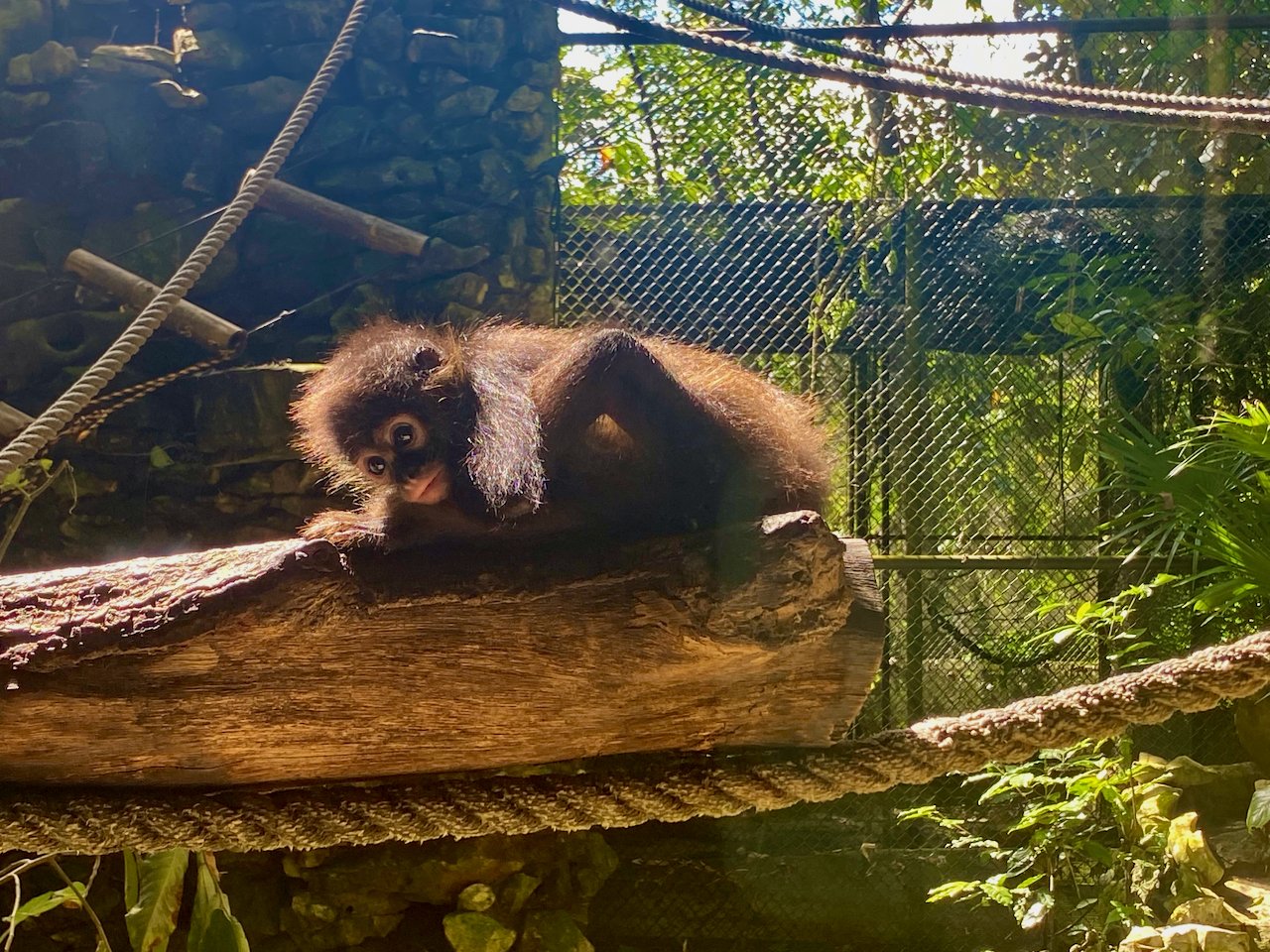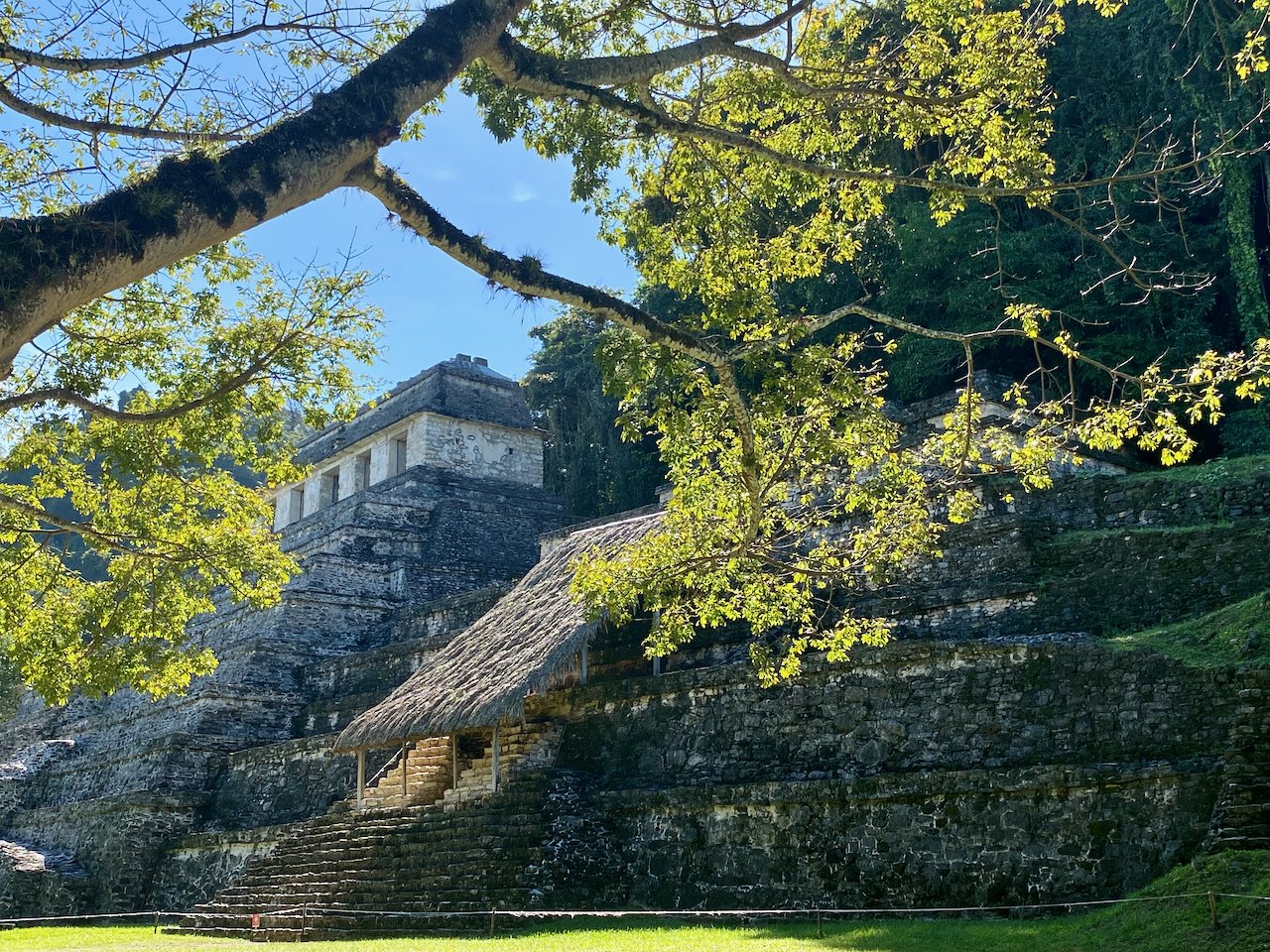With mixed feelings, as always, we left our lovely spot in the city with the goal of reaching the Yucatan coast over 11 days of travel. First stop: Teotihuacan, a pre-Aztec archeological site. Leaving Guanajuato, we wound our way through mountain valleys, past vast fields of agriculture, dipping into small towns, and eventually making our way to the eastern edge of Mexico City. We stayed in a family-run hotel that had a huge, grass yard with a trampoline and toys. They were very welcoming, even on New Year’s Eve, and invited us to attend their evening dinner celebration. We decided to feed the kids elsewhere, get them to bed, and then Erik and I attended the festivities. We were fed three yummy homemade courses and treated to an array of music from Mexican artists. By 11:00, Erik and I were ready for bed. They didn’t let us go without taking a glass of champagne and a bowl with 12 grapes. We were really confused and tried our best with each others’ broken languages to understand why we had to take grapes to bed. Turns out, there are two traditions commonly practiced on New Year’s Eve involving 12 grapes; you either try to eat a grape every second for the last 12 seconds of the countdown and, in succeeding, prove that you will have a great year, or you eat each grape in succession after the countdown and see which grapes are sweet and which are sour. Those that are sour symbolize which month of the year will be tougher than the others. We did neither – just went straight to sleep.
Sadly, sleep did not come easily because another tradition that is practiced in Mexico is setting off fireworks and firecrackers in celebration of anything special. Therefore, with our rooms on the main street of this tiny town, many crackers were exploded from midnight through to 2 am outside our window. Oh well. Happy 2022!
We had arranged to meet our guide at 8:00 at the gates of Teotihuacan. This being New Year’s Day, the gate was a bit late opening up but we were into the site and on our tour by 8:30. The air was still crisp and a bit cool and we were one of only a few eager tourists starting our day. Our guide’s name was Julio and was the son of one of the vendors who had been given lifetime rights to sell on the site. His dad had been a farmer on the land before excavation took place and had his land taken by the government to study the ancient city. In return, his dad was given land elsewhere to work but also given the right to sell goods to visitors. Julio was excellent! He shared with us so many stories not just of the peoples who built the site, but also the Aztecs who inhabited parts of the buried city many years later. He shared some of his family traditions, beliefs, and practices. He spoke of philosophy, astronomy, and physics, all while walking us around this massive (2km long) section of the excavated city and pointing out the neat findings and features. There were so many interesting things, I’d need a whole blog to share. Our favourite things to see were how the two pyramids were designed to align with the shapes of the neighbouring volcanos, how the acoustics of the open square were such that a hand clap echoed in a way that mimicked the sound of their sacred quetzal bird, and how they believed strongly in the three parts of the universe: the underworld, the land, and the heavens. We were also shocked to learn that this whole buried city was not built by Aztec peoples but by another unknown people. It is believed that the site was built in 300BC and then abandoned 500 years before the Aztecs found it and used it in 800 CE and has only had about 10% excavated. By the end of our time with Julio, we were hot, tired, and full of information. Slept came easily that night.
We were startled awake the next morning by something that sounded like a blowtorch beside our ears. Simon was the first to look outside and see the basket of a hot air balloon float by the hotel close enough to see the faces of its passengers. The pilot blasted some heat again into the balloon and we gave a shy and astonished wave to them. It wasn’t the only balloon to pass by either. We ended up seeing over a hundred balloons make their way to an open field for landing. It’s very common on weekends to offer flights over the archeological site during sunrise. We witnessed the first round of flights. Another round occurred a few hours later as we were pulling out of our town and heading east towards the coast. Just as we drove along the perimeter road of the site, a balloon was having trouble reaching a safe landing place. Men on the ground were struggling with large ropes to try and pull the balloon quickly enough to get it over some trees while the pilot continued to blow the hot air into the balloon in an attempt to get some height. We stopped to give them space but they ended up running toward us and the basket skimmed over Chuck. We dodged and wove without hitting any people and got away before the balloon got lower. Phew. Close call.
Our drive east to Veracruz was very pretty. We worked our way out of the higher altitude and drove through some greenery and less arid areas. The highest peaks in the range had snow on top. We were all very surprised to see snow! As we made our way down in altitude, the temperature increased. By the time we reached Veracruz, it was 30 degrees and also very, very windy. We found street parking but had trouble walking with our luggage in the strong gusts of wind. Dust and debris would fly up into our faces. It was a challenge to even go out for dinner.
Our main reason to visit Veracruz was to see the aquarium. Like some of the others we’ve seen, this facility was dedicated to education and preservation of marine species, specifically those living within the Gulf of Mexico. It is not a huge facility, but it had one extra feature that we just couldn’t pass up: the penguin experience! Erik and I knew about this program but had kept it a secret from the kids. When we arrived, Erik booked the first experience of the morning and then told the kids that he’d paid a bit extra to get a special guided tour. They were a bit confused but went along with the silly paperwork and special badges for around our necks. It wasn’t until we were inside the trainer’s room where there were pictures of the Humbolt penguin on the walls that they started to realize something special was happening. Molly, as you may know, is a huge lover of penguins, so we just had to do this for her! We met a lady named Mariana who was a penguin trainer. She told us all about the species and showed us the kitchen where they count and weigh and label a portion of anchovies for each penguin. Then, she had us wash our hands really well and took us to a special room that had some benches circled around a platform that had an anti-slip ramp. This is when it really sunk in; we were going to get to see a real penguin up close!
Another trainer brought a female penguin named Ella into the room. Ella hopped up the ramp but then signalled to the trainer that she didn’t want to be pet. He respected this and led her back to the penguin room while still awarding her with a snack. He returned with another penguin named Alé who was happy to walk around the perimeter of the platform and pause for us to pet his surface feathers. They were slick and tough and felt a bit like snakeskin except wet. Then the trainer spread his feathers a bit and let us tough the underside feathers which were really soft and fuzzy. Alé took a break while we watched a video about marine conservations, asked a few final questions, and then Alé returned to stand with us for some photos. We were not permitted to take our own photos or videos and instead had to pay for printed copies of some taken by a photographer. We did so happily. What a great memory!
We then grabbed a snack and went into the entrance of the aquarium and began our visit. It was very well designed and laid out in a logical manner such that we could learn first about the land animals that rely on the Gulf and that support the ecosystems of the waters. Then we started seeing aquariums with so many types of fish. Eventually, we reached a large viewing room in the middle of a circular tank full of larger, impressive sharks and barracuda and many others. From there we met smaller animals like jellyfish and different coral. We saw manatees as well but the dolphin tank was empty. Then we walked through the penguin area and saw them waddling and swimming about with a whole new appreciation for these birds.
Our next day was a drive day and we made our way back inland towards the city of Villahermosa passing through a region of Mexico that grows a lot of pineapples. Every highway underpass had a vendor selling the fruit. We made sure to get some freshly cut pineapple and a bottle of juice for the drive. It was incredible and cost only a couple of dollars. The landscape began to change again and started becoming more palm-spattered, denser, and much wetter. We could see water in the ditches and jungle-like brush beyond the roads and fields. We arrived during the hustle of late afternoon. Erik found us a great hotel in the middle of downtown so we were able to walk about the shops and markets and get caught up in holiday bustle. It was January 5th, the final day before Three Kings’ Day. The 6th of Jan is celebrated as the day that the wise men arrived at the birthplace of Jesus and is important to many. It was explained to us that many families in central and southern Mexico don’t usually get presents from Santa at Christmas, but will get shoes full of gifts from the wise men on Jan 6th. There is also a celebration amongst families where everyone eats a slice of a special sweet-bread cake that is shaped like a wreath (or like a crown). Inside the cake is a small baby figurine representing baby Jesus. Whichever family member ends up with the piece with the baby is responsible for hosting a large lunch gathering on Feb 3rd. We decided to participate and bought a Rosca del Reyes which we ate as our breakfast that morning. All of us except Claire ended up finding a baby figurine.
On our way out of the city, we stopped at the Olmec Park and spent a couple of hours wandering the jungle terrain (in the middle of the city) and seeing the Olmec stone carvings. These carvings range from being 2300 to 3000 years old. This park was, to our surprise, also a little zoo so we watched monkeys play, saw a jaguar pacing, and watched free-roaming coatis search for bugs. The aviary was full of interesting birds as well. It was very cheap to enter and such a quiet and unique experience.
We had only a few hours’ drive to Palenque and found our hotel down a bumpy mud road. It was a recently built facility that had 12 cabins, a restaurant, and a lovely natural pool. Our host and her father were the visionaries and you could tell every part of the facility was well planned. Even the menu was simple yet fancy using all ingredients from their small farm. The pool was refreshing and super interesting; it was engineered to flow and be filtered with natural plants. We booked four nights here so we planned our three full days.
First, we visited an animal shelter called Aluxes. This non-profit rescue center built its shelter to be similar to animals’ natural habitat. They have over 300 animals that were all rescued or born in the shelter. It was surreal to walk along the paths and see so many animals. The centre even had a number of plant species that are endangered growing in their enclosures. We saw so many animals like manatees, turtles, tortoises, jaguars, monkeys (howler and spider), deer, hogs, flamingos, crocodiles, parrots, and reptiles too. We came across a line of leaf-cutter ants where half were heading one way without leaves, and the other half were walking opposite direction with pieces of leaf on their backs that were bigger than them. We eventually found where they were getting the leaf pieces and discovered a pile of freshly cut leaves. So some were on the cutting task, some on the carrying task, and then we saw their habitat which was a mound of dirt so the leaf pieces were taken inside this mound. Crazy! There was a tall tower we climbed to get a look into and then above the jungle canopy. Also, at one point in our walk, we heard trees rustling and looked up to see a small troupe of howler monkeys just doing their thing. We ate a small lunch beside some beautiful red and green macaws. The whole place was amazing.
Our second day was when we visited the famed Mayan ruins. We found an English-speaking guide on our way into the park boundary. It was a hot day but not humid and so it felt lovely. Our guide, Jorge, walked us around the excavated site and taught us about the tombs, how they were designed, where the body goes, how they were discovered, what was inside, and a number of other facts. He showed us photos of some of the parts that we couldn’t go to see (we couldn’t climb the pyramids due to crowd control for COVID). For an hour and a half, we walked around the open site seeing aqueducts and temples and the final resting place of a famous Mayan King.
We decided to continue the tour with Jorge into the jungle to see ruins that are yet to be excavated. He led us for a one-hour walk and showed us plants, vines, spotted some toucans, and walked us to the top of another known pyramid. We felt like real explorers and marvelled at the feat it must have been to excavate the part that was already done (which is only about 3% of the city). We learned about how the rest of the city was surveyed and mapped by a University of Texas doctoral project. A highlight of the walk was eating termites – they tasted like herbs to me while Erik thought they tasted like celery. We ended the walk at a shallow stream where we dipped our muddy feet and cooled off from the jungle trek. We said farewell to Jorge, ate some lunch, and headed to the park entrance where there is a small but well-organized museum. The main thing to see is the replica of the tomb of the Red Queen with the jade mask and other artifacts found in her tomb. The whole place is a really great spot and we were glad for having made the effort to visit.
Kids decided they needed a down day so our last day was spent at the hotel enjoying the pool, our books, and the quiet time.
Our next stop was the coastal town of Campeche. We booked a night here only as a mid-point stop on our way to Chelem. We were pleasantly surprised by the colourful streets and the modern and beautiful shoreline parks. We ate very well and perused the craft shops. This city is certainly a place worth spending more time.
The next morning we raced off in excitement and anticipation of reaching our month-long rental house in Chelem. The drive was, again, through new terrain with coastal views, sand dunes, and coconut palms. We pushed right through lunch to arrive as quickly as possible. We were greeted by our host, a glittering pool, and astonishing views. But you’ll have to stay tuned to learn more!


